|
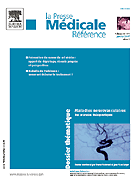
Presse Med. 2006 Nov;35(11 Pt 1):1603-10
[Organ and tissue shortage in France]
[Article in French]
Guerrini P, Claquin J.
Agence de la Biomédecine, SRA 7 Ile-de-France/Centre/les
Antilles, CHU de Bicêtre, Pavillon Paul Langevin, Le Kremlin
Bicêtre. patrice.guerrini@biomedecine.fr
INTRODUCTION: Despite an increase in the number of brain
deaths over the past 10 years,
France faces a
shortage of organs for transplantation. A high percentage of
families oppose organ donation. Over the past decade,
the mean age of organ donors has risen by 10 years. METHODS:
Specific provisions of the public health code have regulated
transplantation activity since 1994. Implementation of the
Transplant Plan in 2000 led to the investment of substantial
financial and human resources in this area. The data
reported here come from the 2004 report of the French
Transplantation Agency, now the Biomedicine Agency, and from
its database. RESULTS: Data for 2004 show more than 2500
listed donors, with at least one organ taken from 1291 and
more than 4000 organ transplants. The donors' mean age was
47 years. Cerebrovascular diseases accounted for most of the
deaths; traffic accidents, which have decreased
substantially in recent years, caused only 16%. The number
of people with brain death reported in France is difficult
to measure but we estimate the figure to be 3500. Refusal
rates remain high and are an obstacle to increasing
transplants. DISCUSSION: We need to appeal to live donors.
We are also setting up pilot programs to use organs from
non-heart-beating donors. With these new initiatives we hope
to reach rates equal to those in Spain, the European leader
in organ transplants.
__________________________________________________________
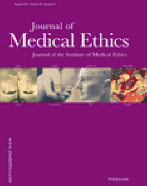
J Med Ethics
2002;28:89-94
Death, dying and donation: organ
transplantation and the diagnosis of death
I H
Kerridge1, P Saul2, M Lowe3, J McPhee4 and D Williams5
ABSTRACT
Refusal of
organ donation is common, and becoming more frequent.
In
Australia
refusal by families
occurred in 56% of cases in - 1995 in New South Wales, and
had risen to 82% in 1999, becoming
the most important determinant of the country's very
low organ donation rate (8.9/million in 1999).
Leading causes of
refusal,
identified in many studies, include
the lack of understanding by families of brain death
and its implications, and subsequent reluctance
to relegate the body to purely instrumental
status. It is an interesting paradox that surveys
of the public continue to show considerable support
for organ donation programmes - in theory we will, in
practice we won't (and don't).
In this
paper we propose that the Australian community may,
for good reason, distrust the concept of and criteria
for "whole brain death", and the equation of this
new concept with death of the human being. We
suggest that irreversible loss of circulation
should be reinstated as the major defining characteristic of
death, but that brain-dead, heart-beating entities
remain suitable organ donors despite being alive
by this criterion. This presents a major
challenge to the "dead donor rule", and would require
review of current transplantation legislation. Brain
dead entities are suitable donors because of
irreversible loss of personhood, accurately and
robustly defined by the current brain stem criteria.
__________________________________________________________
Even the dead are not terminally ill any more.1
Journal of the
Indian Medical Association
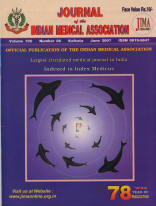
J Indian Med Assoc. 2004 Nov;102(11):630, 632, 643.
Factors influencing refusal by relatives of
brain-dead patients to give consent for organ donation:
experience at a transplant centre.
Singh P, Kumar A, Sharma RK.
Sanjay Gandhi Postgraduate
Institute of Medical Sciences, Lucknow.
To
analyse the reasons for family refusal for donating the
organs of their deceased relatives, 33 families were
approached and interviewed as a part of the consent process.
Thirty of these refused and their reasons for refusal were
documented. In 83%, the principle reason for refusal to give
consent was the non-acceptance of brain death.
Superstitions relating to being reborn with a missing organ
(that had been donated) in 40% or that tampering with the
body would not free their dead relatives from the cycle of
life-death-rebirth in 26% were next most frequently voiced.
A delay in funeral (23%), lack of consensus within family
members (17%), fear of social criticism (10%),
dissatisfaction with the hospital staff (10%) and being
unaware of their deceased relatives' wishes (6%) were the
other reasons cited.
__________________________________________________________
Journal international de bioéthique
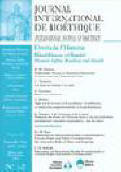
J Int Bioethique. 2005 Mar-Jun;16(1-2):103-16, 195-6.
Applications
for human rights relief and the recommendations of the Japan
Federations of Bar Associations.
Kuramochi T.
Matsumoto Dental University,
Japan.
Between the
enactment of Japan's "Organ Transplantation Law" (OTL) in
1997 and the end of October 2003, there were 27 (30 now)
legal declarations of brain death, and organs were donated
from 26 (29) of those. During this period, four applications
for human rights relief were made against organ donation
facilities by
Takayoshi Okamoto and others. One of these remains under
investigation, but the Japanese Federation of Bar
Associations (JFBA) has offered recommendations relating to
the other three. The purpose of this report lies in
examining these applications and recommendations .
__________________________________________________________
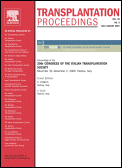
Transplant Proc. 2005 Nov;37(9):3646-8.
Multifactorial
snowball effect in the reduction of refusals for organ
procurement.
Frutos MA, Blanca MJ, Ruiz P, Mansilla
JJ, Seller G.
Transplant Coordination Service, Hospital Universitario
Carlos Haya, Málaga, Spain. mangel.frutos.sspa@juntadeandalucia.es
Interviewing the family of a
possible organ donor is a legal requirement in Spain, but it
is the stage at which most potential donors are lost.
Multiple factors influence the family's acceptance or
rejection of this option, including awareness of the wishes
of the deceased, personal preconceived attitudes of family
members, as well as issues related to the hospital and its
health care personnel, whose attitudes are a key factor in
obtaining permission. We examined all 651 donation
situations in a single hospital that included a family
interview over the last 15 years. Among these 651 cases, 191
families refused donation (29.3%). The rate of donation
refusal has fallen from 46.3% to 12.5% over these 15 years.
To better understand the evolution of donor characteristics,
interviewees, and the setting, we divided the sample into
three 5-year periods to analyze key variables collected from
the family interviews. The results showed that at the same
time as the donor profile has changed, namely, fewer brain
trauma cases and more victims of stroke as well as older
mean age and more coexistent diseases, these has been an
improvement in the factors related to the information and
opinion of both the families and the donor about this
process. The
main reasons for refusal of donation have changed from
negation of brain death, religious factors, and
the desire to maintain the body intact during the 1990s, to
sociocultural reasons in minority ethnic groups, to presumed
refusal during life, and to
family
disagreements during the more recent years.
__________________________________________________________
Social Science & Medicine
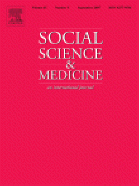
Soc Sci Med 2004
Dec,59(11):2325-34
Death and organ procurement: public beliefs
and attitudes.
Siminoff LA,
Burant C,
Youngner SJ.
Case Western
Reserve University School of Medicine, Cleveland, OH, USA.
Although "brain death" and the
dead donor rule--i.e.,
patients must not be
killed by organ retrieval--have been clinically
and legally accepted in the U.S. as prerequisites to organ
removal, there is little data about public attitudes and
beliefs concerning these matters. To examine the public
attitudes and beliefs about the determination of death and
its relationship to organ transplantation, 1351 Ohio
residents >18 years were randomly selected and surveyed
using random digit dialing (RDD) sample frames. The RDD
telephone survey was conducted using computer-assisted
telephone interviews. The survey instrument was developed
from information provided by 12 focus groups and a pilot
study of the questionnaire. Three scenarios based on
hypothetical patients were presented: "brain dead," in a
coma, or in a persistent vegetative state (PVS). Respondents
provided personal assessments of whether the patient in each
scenario was dead and their willingness to donate that
patient's organs in these circumstances. More than 98
percent of respondents had heard of the term "brain death,"
but
only one-third
(33.7%) believed that someone who was "brain dead" was
legally dead. The majority of respondents (86.2%)
identified the "brain dead" patient in the first scenario as
dead, 57.2 percent identified the patient in a coma as dead
(Scenario 2), and 34.1 percent identified the patient in a
PVS as dead (Scenario 3). Nearly one-third (33.5%) were
willing to donate the organs of patients they classified as
alive for at least one scenario, in seeming violation of the
dead donor rule. Most respondents were not willing to
violate the dead donor rule, although a substantial minority
was. However, the majority of respondents were unaware,
misinformed, or held beliefs there were not congruent with
current definitions of "brain death." This study highlights
the need for more public dialogue and education about "brain
death" and organ donation.
__________________________________________________________

Does it matter that organ donors are not
dead? Ethical and policy implications
M Potts2 and D W Evans1
1
Queens’ College, Cambridge, Cambridge, UK
2 Philosophy and Religion Department, Methodist
College, 5400 Ramsey Street, Fayetteville, NC 28311-1498,
USA
ABSTRACT
The "standard position" on organ donation is that the donor
must be dead in order for vital organs to be removed,
a position with which we agree.
Recently, Robert
Truog and Walter Robinson have argued that (1)
brain death is not death, and (2) even though
"brain dead" patients are not dead, it is morally
acceptable to remove vital organs from those
patients. We accept and defend their claim that
brain death is not death, and we argue against
both the US "whole brain" criterion and the UK "brain stem"
criterion. Then we answer their arguments in favour of
removing vital organs from "brain dead" and other
classes of comatose patients. We dispute their
claim that the removal of vital organs is morally
equivalent to "letting nature take its course", arguing
that, unlike "allowing to die",
it is the removal
of vital organs that kills the patient, not his
or her disease or injury. Then, we argue that
removing vital organs from living patients is
immoral and contrary to the nature of medical practice.
Finally, we offer practical suggestions for
changing public policy on organ transplantation.
__________________________________________________________
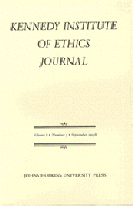

Kennedy Inst Ethics J. 2004 Sep;14(3):301-18
Harvesting the living?: separating "brain
death" and organ transplantation.
Campbell
CS.
Department of Philosophy, Oregon
State University,
Corvallis, OR, USA.
The
chronic shortage of transplantable organs has reached
critical proportions.
In the wake of this crisis, some bioethicists have argued
that there is sufficient public support to expand organ
recovery through use of neocortical criteria of death or
even pre-mortem organ retrieval. I present a typology of
ways in which data gathered from the public can be misread
or selectively used by bioethicists in service of an
ideological or policy agenda, resulting in bad policy and
bad ethics. Such risks should lead us to look at
alternatives for increasing organ supplies short of
expanding or abandoning the dead donor rule. The chronic
problem of organ scarcity should prompt bioethicists to
engage in constructive dialogue about the relation of the
social sciences and bioethics, to examine the social
malleability of the definition of death, and to revisit the
question of the priority of organ transplants in the overall
package of healthcare benefits provided to most, but not
all, citizens.
__________________________________________________________

Medicina (Kaunas). 2002;38(8):792-6.
[Brain death determination algorithm]
[Article in Lithuanian]
Tamuleviciūte V.
Kauno 2-oji klinikine ligonine,
Josvainiu 2, 3021 Kaunas.
The article overviews the
summarized published data concerning determination of brain
death in different countries. The paper is based on some
foreign guidelines, as well as recent literature. Brain
death has been discussed extensively for the last 30 years.
Brain death is defined as cessation and irreversibility of
all brains function, including brain stem. Brain death is
equivalent to death of the individual, even though the heart
continues to beat and spinal cord functions may persist.
There are no internationally accepted guidelines for
diagnosis of brain death. Different sets of
criteria, based on the Harvard Medical School criteria
(1968), are used in different countries, and have been
revised and updated in the recent years. The exact
identification of the preconditions is among the most
important requirements. The cause of coma has to be known
and sufficient to account for the irreversible loss of all
brain functions. Coma and apnea must coexist as well as
absence of brainstem function. Cultural differences can lead
to fundamentally different approaches to brain death
determination.
Moral, ethical,
religious as well as educational factors, including mass
media are important in the determination brain death in
different countries. Brain death is both a
medically and legally important event. In some Western
countries, the legal and medical systems have cooperated,
while in others only the medical system is working.
There are no medical
criteria and no legal support in Egypt, many
Islamic and African countries. Brain death can usually be
diagnosed reliably by clinical criteria alone. However,
there are special circumstances when these are not suitable
and cannot be applied and confirmatory instrumental test is
required for the diagnosis of brain death. In the paper is
presented algorithm of the brain death determination
developed according to the some foreign guidelines, as well
as literature.
__________________________________________________________

Transplant Proc. 2006 Apr;38(3):858-62
Ancillary
hospital personnel faced with organ donation and
transplantation.
Ríos A,
Conesa C, Ramírez P, Galindo PJ, Martínez L, Fernández OM,
Montoya MJ, Rodríguez MM, Lucas D, Parrilla P; Redes
Temáticas de Investigación Cooperativa: Estrategias para
Optimizar los Resultados en Donacíon y Trasplante, Red
C03/03.
Departamento de Cirugía, Unidad
de Trasplantes, Hospital Universitario Virgen de la Arrixaca,
Murcia, España.
ARZRIOS@teleline.es
OBJECTIVE:
To reduce the number of family organ donation refusals,
it is necessary not only to act on the general public but
also on the health care system. In this respect, there are
data suggesting that the percentage of hospital personnel
against donation is high, especially among
ancillary personnel. The objective herein was to analyze the
attitudes of ancillary hospital professionals toward
donation of their own organs and determine factors that
conditioned such attitudes.
MATERIALS AND METHODS:
A random sample in a third-level hospital with a solid organ
transplant program was stratified by ancillary services:
administrative, porters, maintenance, cleaning, and cooking.
Attitudes toward donation of one's own organs after death
were evaluated using a questionnaire on psychosocial aspects
validated in our area. It included various psychosocial
variables that could affect such attitudes. The Student t
test and chi-square test were used to evaluate the data.
RESULTS:
We analyzed 277 respondents of
mean age 43 +/- 8 years and 96% women. The level of
acceptance of organ donation was 64% (n = 178), whereas 46%
were either against or undecided (n = 98). The variables
which determined the attitudes were understanding of brain
death (P = .004); attitude toward cadaveric manipulation,
especially toward autopsy (P = .013) and cremation (P =
.004); concern about mutilation after donation (P = .014);
religion (P = .032); partner's attitude toward donation (P <
.0001); and possibility of needing an organ in the future (P
= .031). CONCLUSIONS:
Ancillary hospital personnel had similar attitudes toward
donation as those of the general public as observed in other
studies. The attitudes were determined by many psychosocial
factors. A campaign to raise awareness among
professionals has become a priority, given that working in a
hospital, their unfavorable attitude could have a strong
negative impact on the general public .
__________________________________________________________

Transplant Proc. 2005 Nov;37(9):3603-8.
Attitude toward
deceased organ donation and transplantation among the
workers in the surgical services in a hospital with a
transplant program.
Ríos A,
Conesa C,
Ramírez P,
Galindo PJ,
Martínez L,
Montoya MJ,
Pons JA,
Rodríguez MM,
Parrilla P
Coordinación Regional de
Transplantes de la Comunidad Autónoma de Murcia, Consejería
de Sanidad, Ronda de Levante, Spain. ARZRIOS@teleline.es
INTRODUCTION:
There are data that suggest that the percentage of hospital
workers not in favor of donation is relatively high, even in
services that are directly related to transplantation. The
objective was to analyze attitudes toward decreased organ
donation in the surgical services.
MATERIALS AND METHODS:
A random sample was stratified by the surgical service and
the job category (n = 263) in a third-level hospital with a
transplant program assessed attitudes toward the donation of
ones own organs after death using a questionnaire including
psychosocial factors as validated in our geographic
surroundings. Student t test and the chi-square test were
used for data analysis.
RESULTS:
Favorable attitudes toward donation were observed in 68% (n
= 178) as opposed to 32% with an attitude that was undecided
or against the act (n = 85). The psychosocial variables that
showed significant relationships with this attitude were age
(most in favor are younger; P = .021); nonmedical surgical
staff (50% against donation; P = .0001); resident physicians
(94% in favor; P = .001); discussion and prior consideration
of donation (P = .016); knowledge of the concept of brain
death (an important factor in nonhealth staff; P = .010);
attitude toward manipulation of the deceased (P = .011) and
concerns about mutilation (P = .026); partner's opinion
toward organ donation (P = .0001); and existence of frequent
medical errors (P = .003). No significant differences were
found, depending on whether the services were involved in a
specific transplant program (P = .853).
CONCLUSIONS:
Favorable attitudes
toward donation among the hospital staff on surgical
services, including those who perform transplants, did not
reach more than 70% and was determined by multiple
psychosocial factors. Donation promotion
activities are necessary for these services, given the
importance that this group's negative attitude could have on
the attitude of the general population.

|